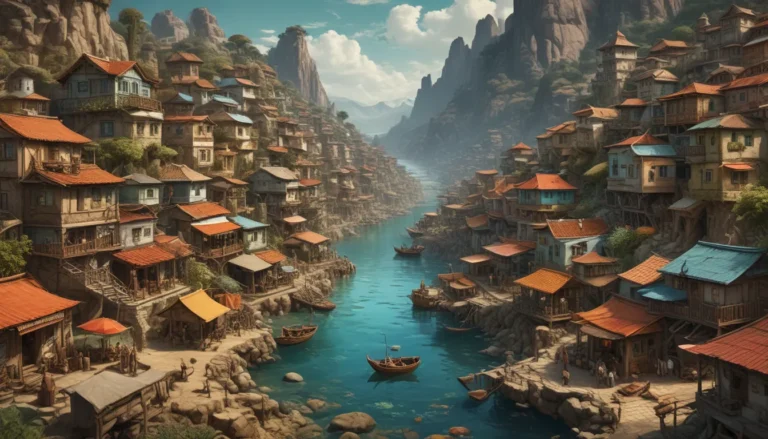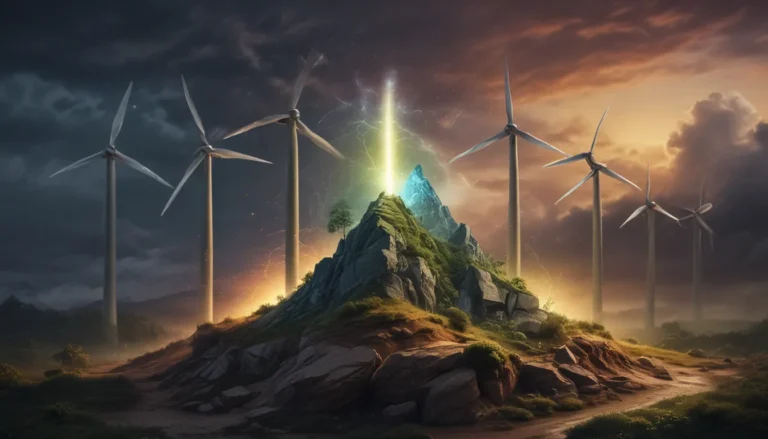A Note About Images: The images used in our articles are for illustration purposes only and may not exactly match the content. They are meant to engage readers, but the text should be relied upon for accurate information.
Erosional coasts are extraordinary geological marvels shaped by the relentless forces of nature. From towering cliffs to hidden coves, these coastal landscapes showcase the raw power and beauty of our planet. In this article, we delve into 20 surprising facts about erosional coasts, shedding light on their importance, uniqueness, and the challenges they face. Join us on a journey of discovery as we unravel the mysteries of these dynamic environments and explore the wonders of erosional coasts!
Unveiling the Beauty of Erosional Coasts
Erosional coasts are dynamic environments constantly being molded by the unstoppable forces of wind, waves, and currents. These stunning landscapes offer a mesmerizing blend of dramatic landforms, secluded coves, and intricate rock formations that tell the tale of Earth’s history. From sea cliffs to sea stacks, erosional coasts present a playground for nature enthusiasts and explorers seeking to witness the captivating beauty of these coastal wonders.
Delving into the Secrets of Erosional Coasts
1. Home to Diverse Habitats:
Erosional coasts provide vital habitats for a wide array of marine life, with rocky tide pools hosting unique ecosystems that thrive in the ever-changing intertidal zone.
2. Geological Marvels:
Studying erosional coasts offers valuable insights into Earth’s history, allowing geologists to decipher the mysteries of the past and gain a deeper understanding of the geological processes shaping our planet.
3. Threatened by Human Activities:
Human interventions such as coastal development, seawall construction, and sand mining can disrupt the natural balance of erosional coasts, exacerbating erosion and impacting the delicate coastal ecosystem.
4. Vulnerable to Climate Change:
Rising sea levels, intensifying storms, and shifting wave patterns due to climate change pose significant threats to erosional coasts, underscoring the need for sustainable management practices.
Embracing the Majesty of Erosional Coasts
5. Natural Landforms:
From sea caves to blowholes, eroisonal coasts boast a myriad of unique and rare landforms that capture the imagination and intrigue of visitors.
6. Iconic Landmarks:
Erosional coasts are often associated with world-famous landmarks like the Twelve Apostles in Australia and the Cliffs of Moher in Ireland, drawing awe and admiration from spectators.
7. Inspiring Creativity:
For centuries, artists and writers have been inspired by the majesty and ever-changing nature of erosional coasts, capturing their beauty in poetry, paintings, and literature.
8. Preserving Coastal Ecosystems:
Despite their vulnerability, erosional coasts serve as natural barriers against coastal erosion, protecting inland areas from the full impact of waves and tides.
Cherishing the Evolution of Erosional Coasts
9. Unveiling Ancient Fossils:
The continuous erosion and exposure of rocks along erosional coasts often lead to the discovery of fossilized remains, offering a glimpse into ancient life forms and ecosystems.
10. Capturing Breathtaking Views:
With rugged cliffs and crashing waves, erosional coasts offer endless opportunities for stunning photographs and unforgettable experiences for visitors.
11. Contributing to the Carbon Cycle:
The breakdown of rocks and erosion of coastal features on erosional coasts play a significant role in the global carbon cycle, influencing the release and storage of carbon in the Earth’s system.
12. Embracing Change:
As we witness the perpetual reshaping and transformation of erosional coasts, we are reminded of the dynamic and ever-evolving nature of our planet, highlighting the beauty and complexity of these coastal environments.
Nurturing the Legacy of Erosional Coasts
Erosional coasts are not merely geological formations but living testaments to the intricate dance between nature’s forces and our planet’s evolution. By understanding, preserving, and cherishing these dynamic coastal landscapes, we ensure that future generations can continue to marvel at the wonders of erosional coasts.
Conclusion
Erosional coasts stand as awe-inspiring showcases of nature’s power and beauty, offering a glimpse into the ever-changing dynamics of our planet. Through the exploration of 20 fascinating facts about these coastal wonders, we have uncovered the complexities, vulnerabilities, and importance of erosional coasts in our world today.
As we navigate the challenges of climate change, human impact, and coastal erosion, it is crucial to prioritize the conservation and sustainable management of erosional coasts. By fostering a deeper appreciation for these remarkable environments, we can safeguard their unique ecosystems, preserve their cultural significance, and uphold their crucial role in maintaining the health of our planet’s coastal regions.
FAQs
- What causes erosion along coastlines?
-
Erosion along coastlines is primarily driven by the relentless action of waves, which wear away the land through processes like hydraulic action, abrasion, and attrition.
-
Are erosional coasts dangerous?
-
Erosional coasts can pose hazards, especially near cliffs and steep slopes. Visitors should exercise caution and adhere to safety guidelines when exploring these areas.
-
Can erosion be prevented on erosional coasts?
-
While complete prevention of erosion is impossible, implementing coastal management strategies such as seawalls, dunes, and groynes can help mitigate the impacts of erosion.
-
How long does it take for an erosional coastline to form?
-
The formation of an erosional coastline can span thousands to millions of years, influenced by factors such as wave energy and geological composition.
-
Do erosional coasts only exist near oceans?
-
Erosional coasts can also be found along lakeshores and riverbanks where water-induced erosion shapes the landscape.
-
Can erosion along coasts affect local communities?
-
Yes, coastal erosion can have significant consequences for local communities, including property loss, infrastructure damage, and the displacement of populations.
-
Are all cliffs on erosional coasts dangerous?
-
While not all cliffs on erosional coasts are hazardous, it is advisable to heed warning signs and avoid unstable or eroding cliff edges for safety.
-
Are erosional coasts always changing?
-
Yes, erosional coasts are in a constant state of flux as erosion and deposition sculpt the landscape over time, reflecting the dynamic nature of these coastal environments.
-
Can erosion create new landforms?
-
Yes, erosion can yield new landforms such as sea arches, sea stacks, and caves through the gradual erosion of vulnerable rock formations along erosional coasts.
-
Are erosional coasts vital for wildlife?
- Erosional coasts offer crucial habitats for diverse marine and coastal organisms, contributing to biodiversity and supporting unique ecosystems that thrive along these dynamic shorelines.
Experience the Magic of Erosional Coasts
As we conclude our exploration of the wonders of erosional coasts, we invite you to embark on your own journey of discovery along these captivating coastal landscapes. From the mysterious sea caves to the majestic cliffs, each facet of an erosional coast holds a story waiting to be unraveled. Embrace the beauty, complexity, and resilience of these dynamic environments, and join us in preserving the legacy of erosional coasts for generations to come.
Your Feedback Matters
We are dedicated to delivering accurate, engaging, and valuable content to our readers. Each fact on our site is a contribution from individuals like you, bringing a wealth of knowledge and insights to our platform. Our commitment to authenticity and quality ensures that every piece of information we share is not only fascinating but also reliable. Trust in our mission to provide you with the most up-to-date and informative content as we continue to explore the wonders of the natural world together.






